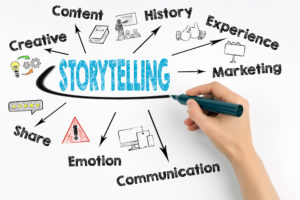Big data is becoming increasingly important for informing business decisions and guiding customer experience – it’s also increasingly complex. Graphs and charts are crucial for simplifying this complex data and making sense of the valuable information that can often be hidden within large data sets. This process of visualizing big data helps you connect with customers and tell your company’s story.
Visualizing Big Data
Data visualization takes the challenge out of understanding large datasets by creating a snapshot of the data that is easily understandable. Using graphical depictions of data, data visualizations simplify large data sets and puts them into a user-friendly format. The most effective data visualizations will pick out the most important and useful insights from the data sets to create a picture of the key takeaways from the data. The graphs and charts that are created through data visualization allow you to quickly see outliers and trends that are hard to identify when data are listed in a table, which helps you understand the broader picture.
Data Visualization for Decision-making
We’ve all heard that a picture is worth a thousand words, but that’s especially true when the picture represents your company’s story. Data visualizations help you gain quick and easy insight into your customers’ needs or even your company’s shortcomings. Rather than combing through spreadsheets of customer data trying to identify where gaps are and what your customers need, data visualization takes this information and turns the numbers into visual representations of the data so you quickly can see trends in the data. This enables you to make quick, informed decisions that are based on your company’s most up-to-date data trends. Ultimately, data visualization provides you with the ability to quickly analyze data through a visual snapshot, which will help you improve the customer experience.
Finding Your Narrative
Data visualization tells your company’s story. It has the ability to create an engaging narrative to share with key stakeholders in your company – whether that’s your sales and marketing teams or your company’s senior management. You can even use data to share your story with customers. When developing your narrative through data visualization, consider these questions:
- Who is your audience — Team members? Senior management? Customers? The audience will influence what data to present and how its visualized.
- What is your key objective or message that you want to communicate? You need to be clear about the story you’re trying to tell and its purpose.
- What does your audience already know, and what do need to know? Their prior exposure to any level of understanding of the topic will determine what data you present and how you present it.
- Which data do you need to tell your story? Data sets can be huge. Consider which variables are going to be the most useful for telling your story.
After you’ve considered these questions and move on to present your data, your focus should be on presenting the data as accurately as possible. You also don’t want to present data in a way that looks cool but might not be the best representation of the data. This could lend to a misreading of the data, which could affect your company’s strategy and change its story.
Data Visualization and Storytelling with CloudOptik
Data visualization tells the story not just of where you’ve been but of where you need to go: It outlines the next chapter of your company’s story. CloudOptik can help your company visualize your data to identify potential customers, find gaps in current customers’ usage of features and products, and write your company’s next chapter. Through our data visualization platform, SmartProfile, we identify important data, analyze it, and break it down into easy-to-read charts and graphs that tell your company’s story. With our advanced software, we give you the data tools needed to continuously update your company’s narrative as the data changes.

